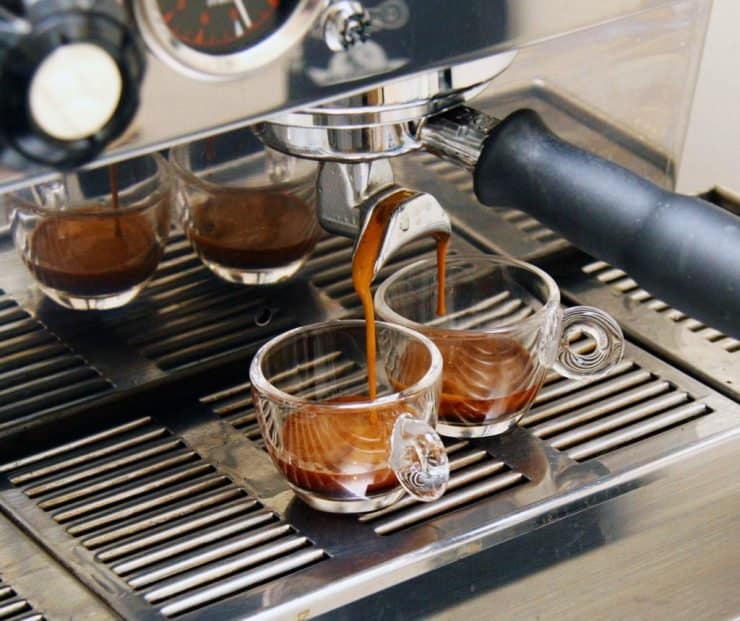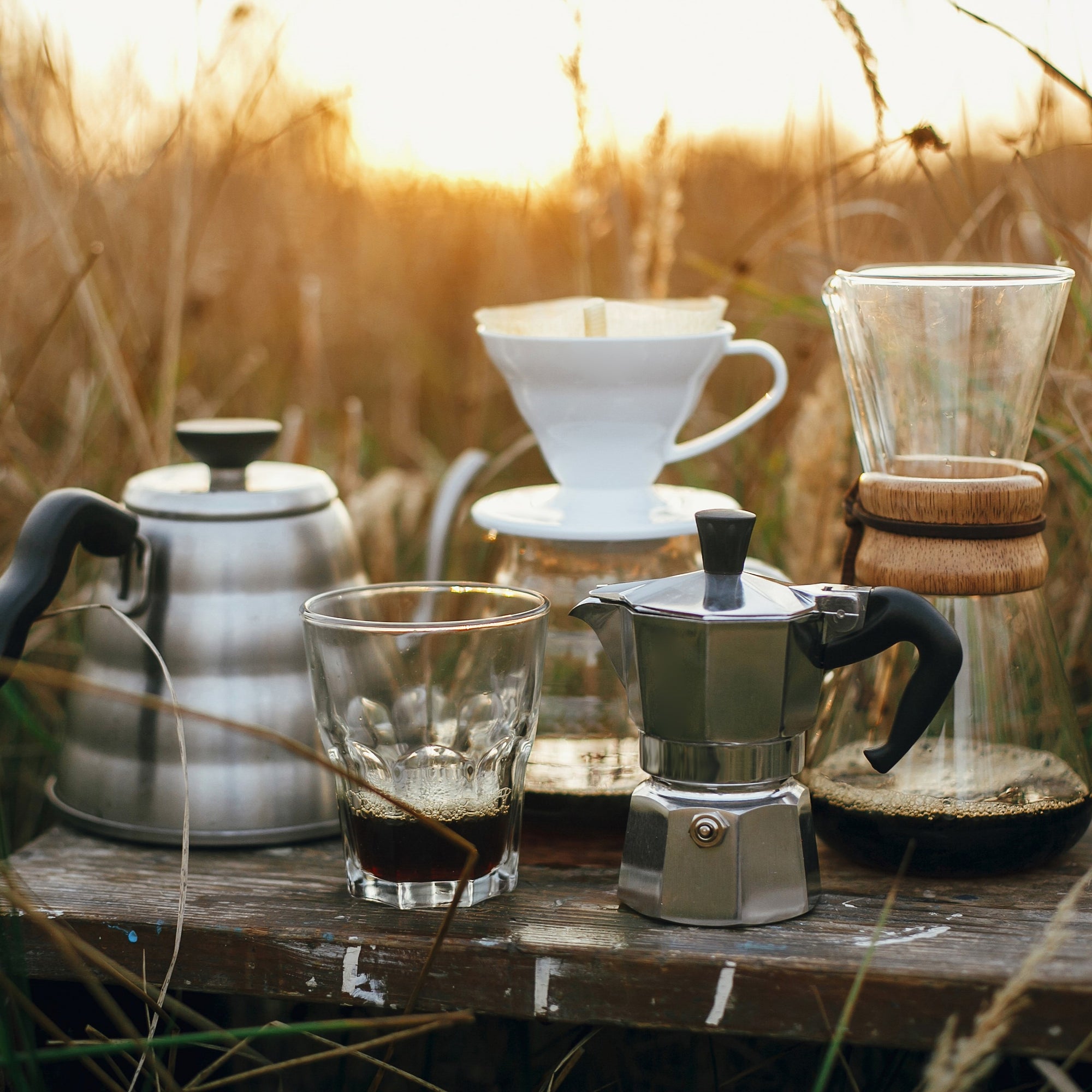The Ultimate Comparison of Popular Coffee Brewing Methods for Home Baristas
The Science Behind Coffee Developing: Exactly How Temperature and Time Affect Your Drink
Recognizing the science behind coffee brewing exposes that temperature level and time are not plain variables but critical components that dictate the beverage's flavor account and general top quality. As we check out the subtleties of these components, the concern arises: how can one effectively equilibrium temperature level and time to achieve that best mixture?
The Chemistry of Coffee Extraction
The chemistry of coffee removal explores the detailed procedures that change raw coffee beans into the aromatic beverage appreciated worldwide. This change largely entails the solubility of numerous substances existing in the beans, which are influenced by elements such as grind dimension, water quality, and the brewing technique employed.
During the developing process, warm water acts as a solvent, extracting soluble substances, including high levels of caffeine, acids, lipids, and sugars, from the coffee premises. Each substance adds to the taste account, fragrance, and body of the final drink. Acids are accountable for zesty and brilliant notes, while oils contribute to a rich mouthfeel.
The first phases of brewing essence acids and sugars, leading to a positive acidity, while extended extraction can lead to bitterness due to over-extraction of undesirable substances. Understanding these chemical interactions is essential for optimizing developing techniques, as the balance between removal time and water temperature can substantially affect the general top quality of the coffee.
Suitable Brewing Temperatures
Discovering the best developing temperature level is vital for unlocking the full potential of coffee tastes and aromas - coffee brewing methods. Study suggests that the optimum array for developing coffee lies between 195 ° F to 205 ° F(90 ° C to 96 ° C) Within this range, the removal process successfully liquifies the desirable soluble substances in coffee beans, bring about a well balanced and tasty mug
Developing at reduced temperature levels, such as listed below 195 ° F(90 ° C ), may lead to under-extraction, yielding an acidic and weak brew with soft flavors. Alternatively, developing at temperatures exceeding 205 ° F(96 ° C) can lead to over-extraction, producing a bitter and rough preference due to the extreme dissolution of unwanted compounds, such as tannins.
Additionally, the suitable developing temperature level can vary depending upon the coffee bean kind and roast degree. For instance, lighter roasts typically gain from slightly higher temperature levels to boost their complicated taste accounts, while darker roasts might be much better suited to reduced temperatures to mitigate resentment.
Inevitably, preserving accuracy in developing temperature levels is important for attaining an unified balance of flavors, guaranteeing that every mug of coffee delivers a rewarding sensory experience.
Effect of Developing Time
Developing time plays a crucial function in figuring out the taste profile and total quality of coffee. Much shorter brewing times can result in under-extraction, leading to a sour or weak taste, as not sufficient soluble compounds are liquified.
Optimal developing time differs relying on the approach used and the work size of the coffee. For example, a French press generally calls for regarding 4 mins, while espresso removal is generally finished within 25 to 30 seconds. It is necessary to calibrate developing time in conjunction with other variables, such as water temperature level and coffee-to-water ratio, to achieve the wanted flavor account.
Understanding the influence of brewing time allows coffee lovers to refine their developing methods, eventually boosting the sensory experience of their mug (coffee brewing methods). With cautious attention to this variable, one can unlock the full possibility of the coffee, exposing its special features and subtleties
Brewing Approaches and Their Effects

For circumstances, techniques like French press and chilly brew enable a much longer steeping time, resulting in a fuller body and robust taste due to boosted extraction of oils and soluble solids. On the other hand, espresso brewing utilizes high pressure and a much shorter extraction time, creating a concentrated shot that emphasizes intense tastes and an abundant crema.
Pour-over strategies, such as Chemex or V60, provide a more controlled removal procedure, permitting the maker to control flow price and water distribution, which can improve brightness and clearness. Percolation methods cycle water through the coffee premises several times, leading to a stronger, usually bitter taste.
Last but not least, the use of paper filters versus metal filters can additionally affect the final taste; paper filters typically produce a cleaner cup by capturing oils and great bits, while metal filters enable even more oils to pass through, adding to a fuller mouthfeel - coffee brewing methods. Understanding these nuances can boost the coffee experience considerably
Tips for Refining Your Brew
A well-executed mixture can change also the simplest coffee into an exceptional experience. To attain this, attention to detail is vital. Start with high-grade, newly baked beans, as their flavor account decreases over time. Grind the beans prior to brewing to make best use of quality, ensuring the grind dimension matches your developing approach-- coarser for French press and finer for espresso.
Water quality plays a critical duty; use filtered water free from contaminations. The excellent brewing temperature ranges in between 195 ° F and 205 ° F(90 ° C to 96 ° C ) Also warm can scorch the coffee, while as well amazing may under-extract tastes.
Timing is similarly essential. For immersion techniques, steeping for three informative post to five mins is optimal, whereas drip techniques generally take about 5 minutes. Trying out mixture times to locate your recommended stamina.

Verdict
In summary, the intricate relationship in between temperature level and time is critical in the coffee developing procedure. Recognizing these scientific concepts encourages individuals to fine-tune their developing methods, eventually leading to a much more balanced and satisfying coffee experience.
Understanding the scientific research behind coffee see here developing discloses that temperature and time are not plain variables however essential elements that dictate the beverage's taste account and total top quality. Recognizing these chemical communications is critical for maximizing developing strategies, as the balance between extraction time and water temperature can significantly affect the total quality of the coffee.Developing time plays a crucial duty in figuring out the taste profile and overall quality of coffee. By concentrating on these components-- bean top quality, grind size, water temperature level, soaking time, and ratio-- you can you can try here raise your coffee brewing process, resulting in a regularly superior mug.
In recap, the complex relationship in between temperature level and time is extremely important in the coffee developing procedure.